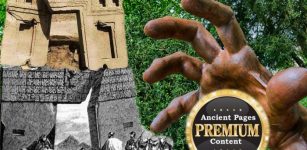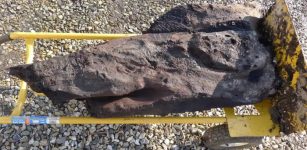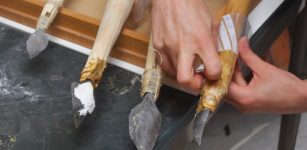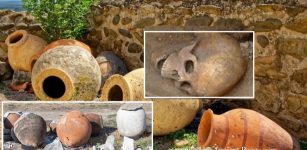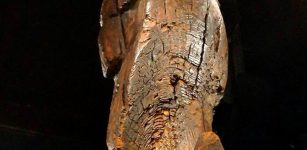Tomb of Patriarchs In Hebron Was Used And Visited By Pilgrims 2,700 Years Ago – New Study
Conny Waters - AncientPages.com - A new study conducted on pottery items uncovered in the Tomb of the Patriarchs in Hebron suggests the cave was used and visited as a pilgrimage site during the First Temple Period, around 2,700 years ago.
Palestine, Hebron, Cave of the Patriarchs from the south. image source
Tomb of the Patriarchs and Matriarchs (Ma’arat HaMachpelah or the Cave of Machpelah) is the world's most ancient Jewish site and the second holiest place for the Jewish people, after Temple Mount in Jerusalem. According to tradition, Jewish patriarchs and matriarchs were laid to rest in this place.
The cave and the adjoining field were purchased—at full market price—by Abraham some 3700 years ago. Abraham, Isaac, Jacob, Sarah, Rebecca, and Leah are all later buried in the same Cave of Machpelah. These are considered the patriarchs and matriarchs of the Jewish people. The only one who is missing is Rachel, who was buried near Bethlehem.
The study's results could shed more light on this long period of 1,600 years between the time the cave is thought to have been first used and the building of the monumental structure erected under King Herod the Great in the first century BCE.
No archaeological excavation has ever been conducted at the site of the Cave of Machpelah, which is considered the second holiest after the Temple Mount in Judaism and also one of the holiest in Islam.
As explained to The Jerusalem Post by Ariel University archaeologist David Ben-Shlomo, a co-author of the study, the Herodian building stands on an earlier structure, possibly built in the Hasmonean period (second century BCE), which was built on top of the cave. The entrance to the underground cave was blocked by Islamic authorities for several centuries starting from the 13th century, he said.
After Israel conquered Hebron in 1967, a very limited amount of visits occurred, while in the past decades, the site has not been accessed anymore.
“In 1981, a small group entered the space, which they described as filled with dirt, bones, and pottery from all kinds of periods,” Ben-Shlomo said.
“They collected four vessels. It was not a very accurate work, but it is all we have from this very unique site. The pottery dates back to around the eighth century BCE, which brings us much closer to the tradition of the story about the cave presented in the Bible,” he added.
The items – fragments from a bowl, a chalice, a jug, and a jar – recently underwent several compositional analyses, including petrography. Petrography is the study of rocks and minerals. Using this technique, researchers can ascertain the geological source of artifacts, which helps identify their geographical origin. In the case of the vessels found in the cave, they appear to come from different areas in the Hebron and Jerusalem region.
“We do not know for sure what was the function of the cave during the First Temple period, but we can infer that people came to visit it from different locations,” Ben-Shlomo said. “Moreover, a question stands about whether new people continued to be buried there. However, there seems to be a continuation of considering this place as a holy place, as a pilgrimage site, visited from different parts of the country.”
Even the Bible does not shed light on what was happening to the Tomb of the Patriarch later on: No reference to the cave appears outside of the Five Books of Moses, while Hebron is mentioned several times in the Prophets and Writings.
The many mysteries surrounding the Tomb of the Patriarchs , whose upper structure today serves as both a Jewish synagogue and a Muslim mosque with separate entrances, will not likely be solved any time soon.
The four pottery items related to the site are now stored at the Museum of the Land of Judah in nearby Kiryat Arba, and might offer some further insights on their ancient use, as it is possible that some of them still contain traces of organic residue.
“We hope that we will be able to carry on further analysis in the future,” Ben-Shlomo said.
The results of the study were published in the latest issue of the Israel Exploration Journal.
Written by Conny Waters - AncientPages.com Staff Writer







